At the last few companies I’ve worked for I’ve been going through this transformation and thinking about metrics.
How do we think about enterprise-level data and analytics? And how do we start thinking about multi-sources of truth? Particularly as these problems are inevitably only going to get bigger and bigger. I’ve landed on the concept of starting at the last mile, and in this article, I’ll walk you through it.
One of the interesting things I've found in the last few companies I've been in is going through this data transformation and thinking about metrics. In a lot of companies, I find a lot of the same problems over and over again.
Whether it's extremely large Nike, rapidly growing Zendesk (yes, we are pretty big now, over $1billion in annual revenue), or even some of the smaller companies I've been advising, we always get to this state of:
- How do we think about enterprise-level data and analytics?
- How do we start thinking about multi-sources of truth?
What I've found is this concept of starting at the last mile.
- How do we think about governance and scale as all these problems are just going to keep getting bigger?
I put together this article to walk through that and to level set how we're doing at Zendesk now. I'm happy to share some of the playbooks we walked through at American Eagle, Nike, Philips, and Premera.
A lot of this is the same thing. A lot of companies, I'm sure, worry about the same types of problems.
Zendesk
Zendesk is a data analytics organization and we’re going through a transformation - that's part of my role of coming in - to really start thinking about how do we treat data as an asset?
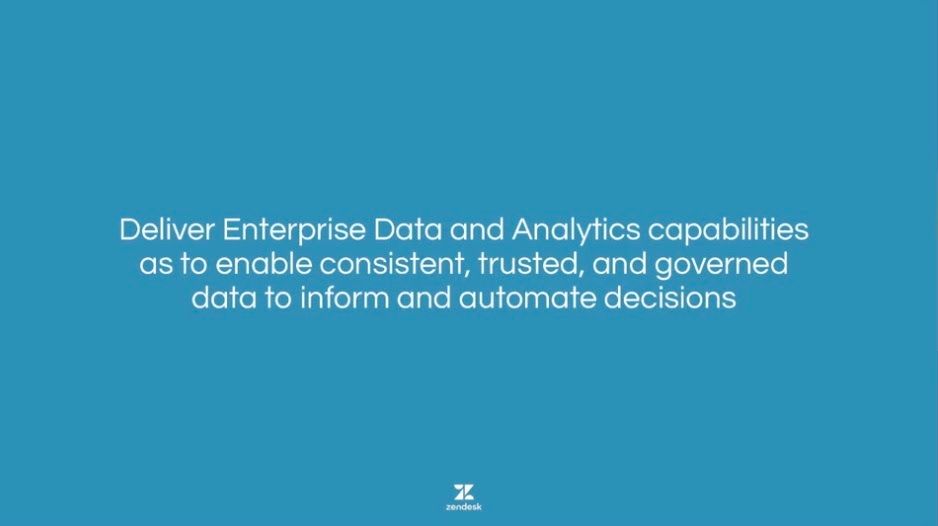
The earth and the moon
We use a fun analogy at Zendesk, this Earth and Moon concept.
The Earth is Zendesk as the platform and I'll use Peloton, one of our customers, as an example.
Data analytics lives within the earth that Peloton uses, it's our individual platform that we sell and our customers use.
Outside of that, we talk about the moon, which is the business of Zendesk. How do we think about data and analytics and how we run our business? Fortunately, we've had an amazing product that we've now hit the problem of how do we combine the Earth and the Moon together as one universe?
That's what I'm trying to lead and think about as three concentric circles of our organization, the first just being data and analytics as it exists.
- How do we use data and analytics within Zendesk to manage our business and our products? There are tools and technologies and techniques to do that. Yes, our team fits in there.
- How do we influence bringing these together into these data meshes? How do we think about utilizing data as an asset? We know Peloton's customers better than they do because they're using our platform, how do we start thinking about unlocking that? This really brings us into the third concentric circle which is,
- How do we bring data and analytics with business together? And start thinking about, as we understand Peloton's customer better for Peloton, how do we offer better services to Peloton or better products to Peloton to be able to use that and give a better customer experience to their end customer?
We're really starting to blow out this problem and thinking about data as, what does that mean for our information architecture? And how should we even start thinking about this problem?
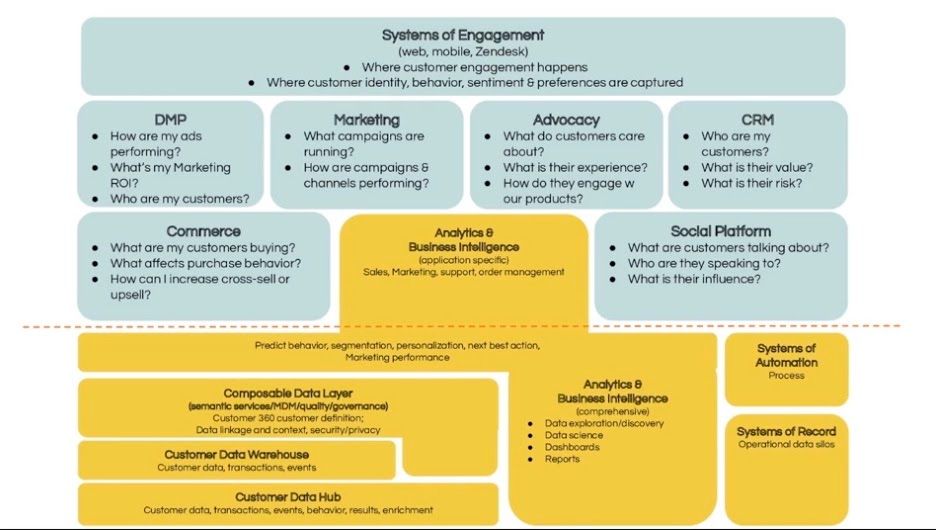
Our charter
Our charter basically is to really own that and bring trusted data and analytics across the enterprise of Zendesk and across that universe.
I always like to ground a little bit because one of the unique parts of this problem is understanding where we fit. I like to say that the business of Zendesk and one of the fun things I learned when I was interviewing was one of the top skill sets it seemed that we have to hire across every business area, regardless of what they focused on, was SQL knowledge.
It blew my mind like, yes from a citizens data scientists and citizens data analysts and citizens X world that we're moving into, it feels weird the business isn't focused on business skill sets.
I would love it if the advocacy folks just think about advocacy, and data analytics just became part of their universe and we didn't have to uplevel their skill sets to be able to teach them how to use SQL.
So what I did is put together this view and say, "Well, yes, there's this line here. You guys should just live up here all day, every day, constantly obsessed about how to serve your customer better".
Now, data analytics, and all the individual applications you use to run your business, yes, just about every tool now has its own platform for metrics and insights. But:
- How do we think about that cutting across the company? And
- How do we think about the consistency of that?
- How do we connect that data?
- How do we start thinking about problems like customer 360 and content 360? And
- Understanding a customer throughout their lifecycle?
Those are the problems I want to focus on, and help enable answering these questions for the business better. It's been a journey and a rewarding one so far in my first few months here at Zendesk.
The business is pretty much taking a heavy, deep breath of thank you, thank you for showing up, because I didn't want to think about these problems of how a customer's lifecycle moves across their different platforms.
Some of the problems
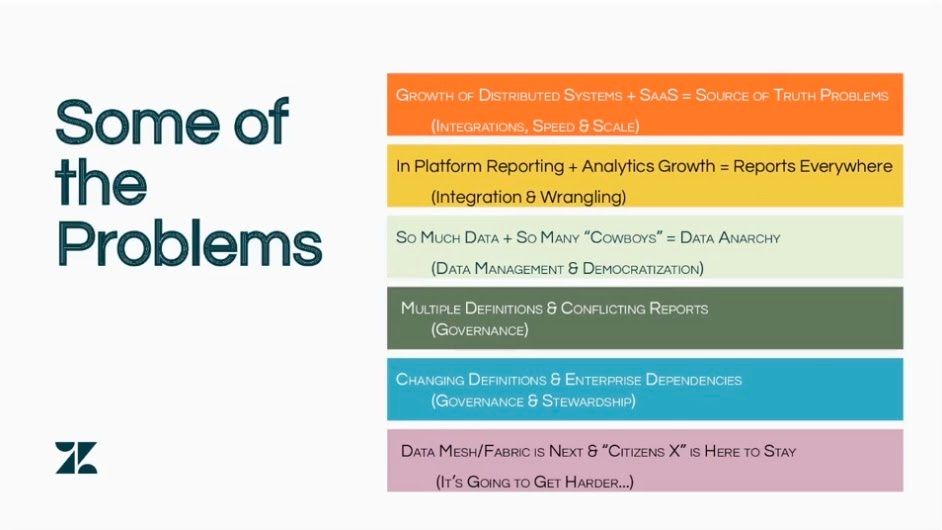
Growth of distributed systems + SaaS = Source of truth problems
The growth of distributed systems in SaaS architecture is adding these problems of integration, scale, and speed.
At Zendesk, even though we're a SaaS platform, we are built also on the cloud and of SaaS services of our own clients and partners. For context, I believe the last number I heard was somewhere around 150 to 200+ SaaS tools that Zendesk itself uses.
If you just think about the free flow of data in and out of those systems safely and securely, that's a massive problem.
As part of our new architectural review board, we have over 100 requests coming in, in our backlog to review as part of our overall information architecture. Again, this problem is only going to get bigger.
In-platform reporting + analytics growth = reports everywhere
Now, as I mentioned with those in-platform reporting tools, how do we think about consistency of what are our total sales?
I was in a meeting yesterday with our CMO and our sales leader, and essentially their point was, "I've got too many asterisks on every report I look at". I'm like, "That's great feedback because every report you're looking at is taking different approaches to thinking about data", which in my mind, you start moving into this data anarchy problem.
So much data + so many “cowboys” = data anarchy
We had the same problem at Nike, every organization has its own analyst and data engineers, and they were looking at data with their own lens. It's not even just dimensional data, it's a data consistency problem across the organization.
Multiple definitions & conflicting reports
As people put different definitions, you move into these conflicting reports as well. When we talk about sales, what do we mean by that? When I was at American Eagle, we talked about zones for the different stores and looking at store operations.
Changing definitions & enterprise dependencies
Well, the problem is across five different executive reports going to the C-staff, we have zone debt defined in four different ways. Sometimes a report uses them in two different ways on the same report. As you imagine those definitions continue to change, how do you keep up with that?
Data mesh/fabric is next & “citizens X” is here to stay
Again, as we talk about this data mesh and data fabric and we're moving into this citizens X type of environment, this problem is only going to get larger.
Frankly, we all don't have a couple of million dollars sitting on the side to go build our own data catalog let alone the integration side for it. This solution needs to take time to deliver into the organization but again, the problems are getting bigger so where do we start?
How are we changing the way we work?
I like to open every article or talk I give, since I've been at Nike, with this from-to image.
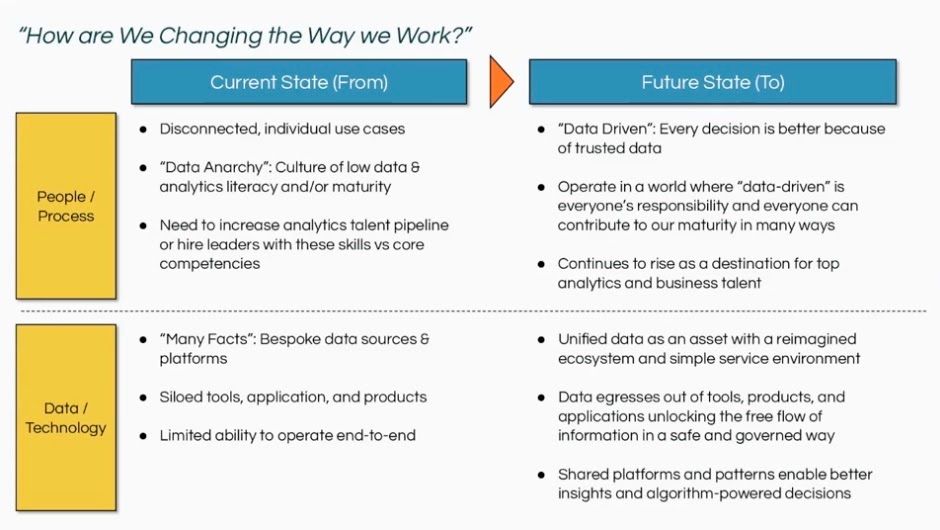
The easiest way I like to think about this is, the technology piece is the easiest part. There are three, five, some vendors will tell you 15 options to solve every one of these problems I'm going to present, yes.
But it's not as easy as just fork-lifting an ecosystem or architecture in and we've got the problem solved right. It's people. People and process are always going to be the biggest challenge and the biggest opportunity.
If we think about and again, this isn't just Zendesk, I've used this image in the last four places I've been, it seems a lot of these problems are recurrent.
As we think about the ecosystems growing, this concept of data anarchy, or low data and analytics literacy, I can't tell you how many times that I've seen one negative filter completely change the review of how the business is doing today.
Depending on the maturity of the analyst presenting that, that literally will completely change the room and flow and how we're thinking about and reporting out to the street.
We really need to understand how do we think about certified curated consistent data? And then, where do we even report those from? And the world of living in a massive data lake is shifting, we can't keep up enough and there's too much across our data landscape.
So yes, we can solve that problem, but how do people interact with it? That's a lot of the focus that I try to maintain as we move into these rooms and think about the transformation of data and also business transformation utilizing data.
“Roadmaps are evidence of strategy. Not a list of features.”
Instead of again, where I just go, "Cool, let's throw down all the features, and how do we just implement this?" I, as a product manager, always like to use this quote to start talking about, "Look, we can roadmap these things but let's stop talking about them as features".
We threw Gainsight implementation or integration on our backlog, great, what does that mean? What features are we bringing out, but how are we changing the customer experience?
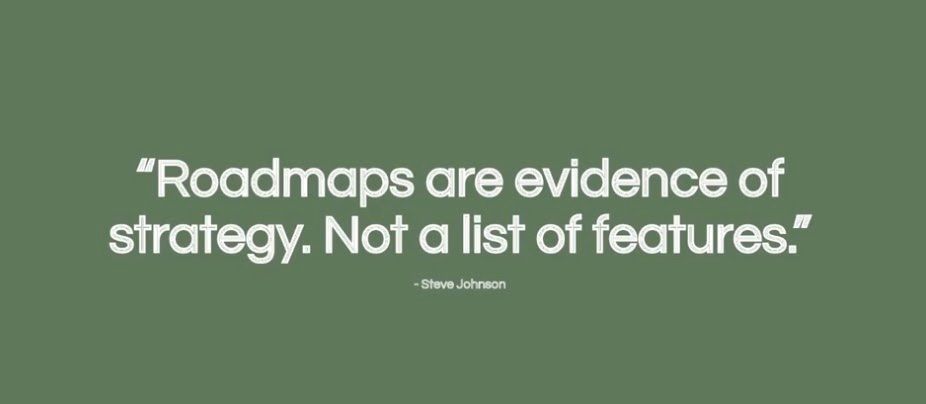
I just go back to:
- What's the last mile?
- What's the experience we're trying to drive?
- How do we do that consistently? And
- How do we provide a technology ecosystem under it?
I want to start with a problem, roadmap with that, and really start thinking about what our strategy is as an organization. Then as the data and analytics leader underneath of it, how I deliver to that.
Again, keep the customer first, think about strategy, and then we can think about the features to deliver to it.
The analytics factory
At Zendesk, we're starting to build what we are now calling our analytics factory. There are a couple of pieces to that factory.
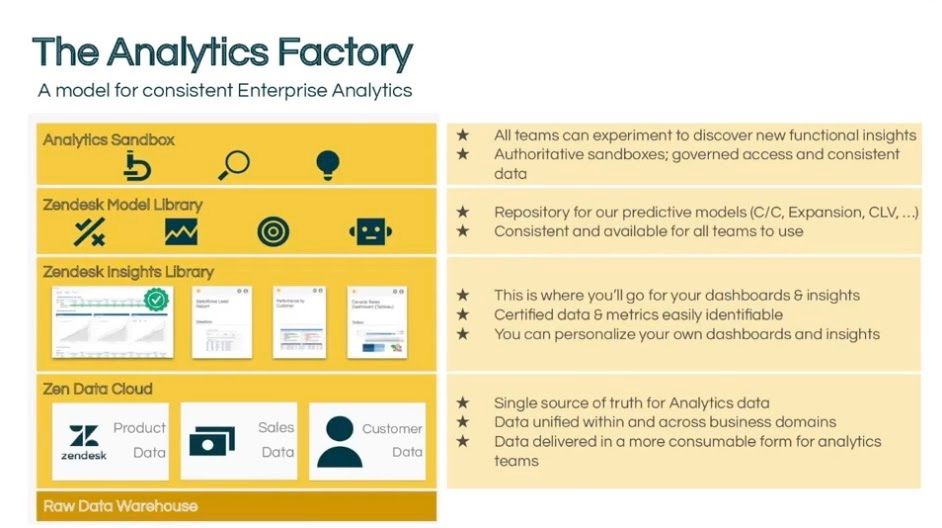
Raw data warehouse
One is the consistent data that's flowing everywhere in the organization that I can't stop. Let's start landing that. We're building that in a raw data warehouse.
That data isn't necessarily usable. Unfortunately, a lot of Zendesk to date, and this is what I even saw at American Eagle, is everybody using that raw data, curating their own content, and then going.
Instead, we're trying to get more mature around looking at data sources and starting to think about certifying those data sources for key opportunities within the business.
Giving a single source of truth to analytics data doesn't necessarily mean it has to come from the same place. This is where that strategy starts to get really fun and unique and interesting, as we think about data meshes.
But unifying that data across different business domains and allowing users not necessarily to have to think about where that data is stored, but a consistent way to access it.
Then as an EDA organization, we can think about the governance of that data, to start thinking about certifying those data sources, to allow people to be able to start building analytics or models overtop of it.
How do we do this as our last mile?
Zendesk Insights Library
This is where our Zendesk Insights Library comes into play. Our Insights Library is where we certify actual reports and be able to serve that to the business.
We've gotten alignment with our E-staff as essentially if anything touches E-staff, it should be certified. If it doesn't, then I want them to kick back and shame that person publicly, in the most fun way I can say that.
Again, nothing goes the E-staff without being certified. What does it need to be certified? The data source, as well as the logic behind it. If it's an enterprise asset, it should be coming from the enterprise team or certified by the enterprise team. I'll get into more of that in a second.
Zendesk Model Library & Sandbox
But knowing we have this certified data layer, and certified data sources, this is now where we can properly start doing sandboxes and model development overtop of it.
Being able to now capture what model library I have as an option to me.
- Can I utilize a data science sandbox as well to start using these tools?
- How can I safely start running analytics and insights over top of this data as well in a non-production-based environment?
This is where we're starting to build this analytics factory.
The last mile: Zendesk insights library
I'm going to try my best not to be vendor-specific because as you most know, a lot of these capabilities are found in a few different tools or within likely the ecosystem you're using.
The problem we had is, as I mentioned, whether it's Salesforce reports or somebody built something in Tableau, somebody else built a report or insight within AWS and GCP, how do we start thinking about, as an executive in Zendesk, how do I get served that content?
I have to go across four or five different sources. When I joined Zendesk, I was trying to figure out what are the most important reports for the business?
I can't share that but I have another view over here where we set up this executive scorecard to E-staff and it has five different analytics sources for which we're serving that data with no consistent baseline of where that data came from.
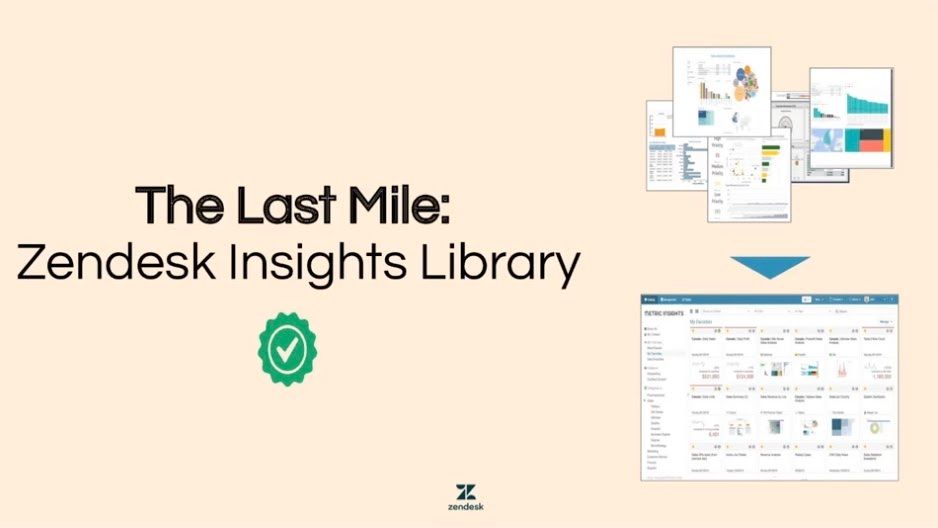
Other than living inside those likely sources of truth. But again, we can't have a single location to serve that content.
That's where I say, "Well, let's start here. Let's start at the certification tier. And then as we identify and for certification of our key enterprise assets, we can start working backward and we can start allowing those teams to now self-service and start working in a governed ecosystem".
This is what our portal looks like with a sample, not our internal one.
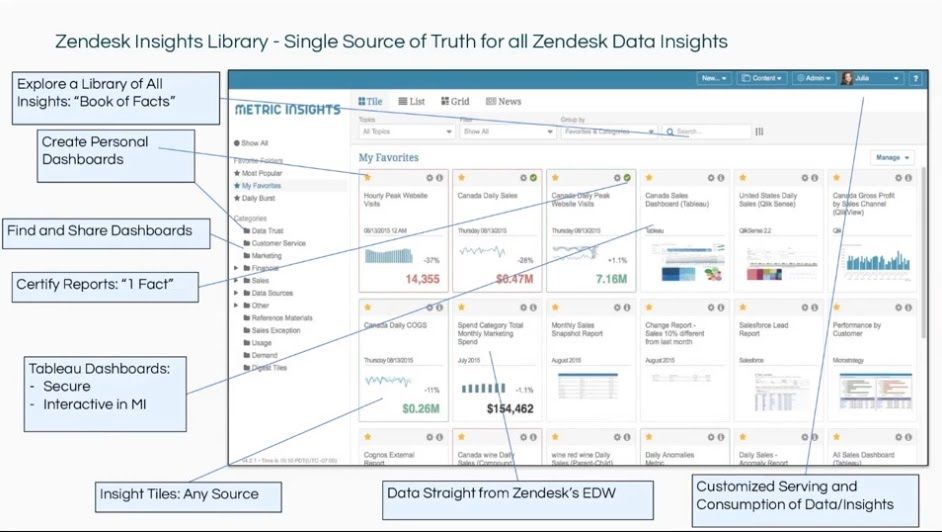
Essentially, it's a single location for people to search, and again, that big checkmark to be one fact. In this case, when we talked about daily candidate sales, there's only one source of what that means.
As I mentioned, back in our executive meeting yesterday, where we aligned to was, "I don't want to see asterisks. If we talk about sales performance yesterday, I want there to be one number of what our SMB sales were, I want to know one number of what our enterprise sales are. And I want to be able to see how we're doing against plan.
No, that doesn't mean plan against board plan or plan against our forecast, what does plan even mean? And let's be very specific, and have one fact for each of those.”
That's where we're starting with this portal or platform to say, what is that one source of truth? And how do I easily find it and serve it across the company?
That's where we're building this insights library.
Now, again, Tableau has their version of this as well as Thoughtspot and others. At Nike, we looked at, do we build this ourselves? Or do we bring in a vendor to do it? I know, they're still analyzing both of those as they're rolling out their service.
But basically, it's the same thing as well let's just start at what are we serving our customer? Or what are we serving our business partner? And how do we make sure we talk about facts?
At American Eagle, we called this our Book of Facts, at Zendesk we're calling it our Insights Library.
The next mile: data governance expansion around the factory
This necessitates our next mile and that's great.
Now that we've identified a fact, we talked about sales yesterday, now what do I do? We've identified this thing, but I also know it's coming from Salesforce, we have no data contracts with Salesforce, I can't actually guarantee its consistency.
Our point on the data and analytics team is, "Well, let's make that our problem, and then we'll start to solve it underneath blindly from you. We will be accountable for the consistency and delivery of facts, and certified facts. And we'll give a playbook for others to be able to create facts".
But then now we need to actually start scaling what we mean by that and how to do that better, faster, and in a self-service way so we can be much more prescriptive to teams to be able to self serve, and to self publish facts across the business.
Data catalog w/ the analytics factory
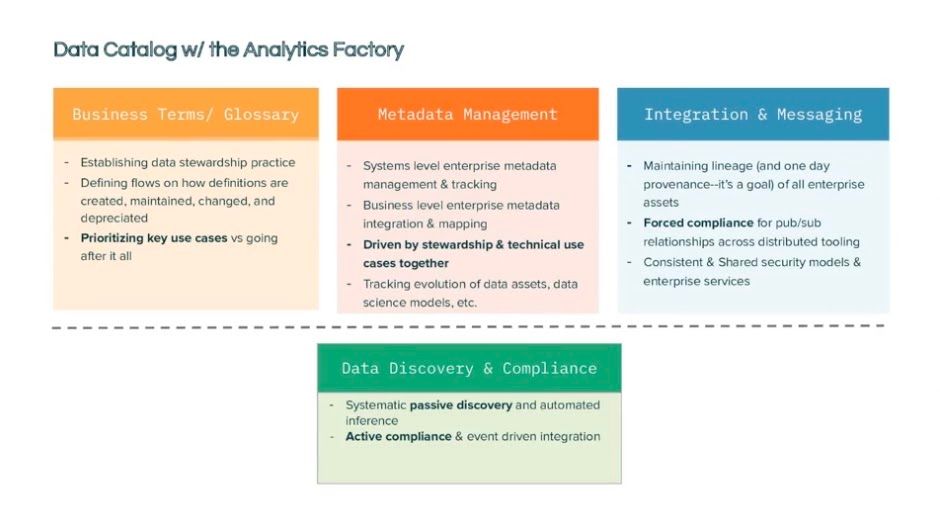
I've broken this down into four different buckets for Zendesk. We've actually started talking to vendors a couple of weeks ago and we're trying to look at and break down this data catalog problem into four different spaces.
If you start thinking about data catalog, and how to think about facts and serving facts across the business, my advice to you is don't think about one tool.
If you think about as we're all mostly SaaS companies or utilizing SaaS companies, think about breaking up your ecosystem into fit for use and fit for purpose.
Then how do we continue to think about distributed architecture internlly as well as how we're consuming to others across other companies.
Business terms/glossary
What I did is one, think about it as a business terms and glossary, and think about establishing your data stewardship practice.
When I was at Nike it was "Look there's only one definition of the Russell Westbrook 0.1." When you send that over to Footlocker changes their definition of what colors that shoe is, they also will change it depending on the region that they sell it to a lifestyle shoe or basketball shoe, as we called it, or to however else they would want to distribute to the particular market that would purchase the shoe given association.
Now when that data came back to us, it came back as a Russell Westbrook no version, a lifestyle shoe and with different colorways than we expected.
This is where we start thinking about, how do we understand and think about the life cycle of those definitions, and how they both go out as well as come back into our environment to talk about the performance of it as well as forecast for future ideas?
Metadata management
This is where the metadata management starts coming into play, and that's just systems-level metadata, how do we think about business-level metadata and be able to interact with that across its' lifecycle?
Integration & messaging
The third one is integration and messaging. Effectively, this is, how do you think about enterprise pub/sub, and being able to make sure that every connected piece of SaaS service or technology across your ecosystem publishes back into your metadata service?
Yes, every platform has its own metadata management. How do we think about global metadata management across the data mesh? That data needs to move.
Data discovery & compliance
The other part as everybody is concerned and continuing to grow is how do we think about compliance and data discovery? That should be both active and passive.
- Can we do inference as data is moving across?
- As we're getting a right to be forgotten request, how do we make sure that's been followed? But also,
- How do we make sure that data is not sitting in other systems?
If you break these things up, and I'll show my bias here for a second, do you look at big ID, you look at Collibra? Most likely, you probably have to build this yourself based on my experience. And is this like a Kafka implementation?
Great, that's a very expensive year, if you want to do all this at one time, or it's a very ugly, meaty system, if you say, “I'll just go to Informatica”.
Thank you.



